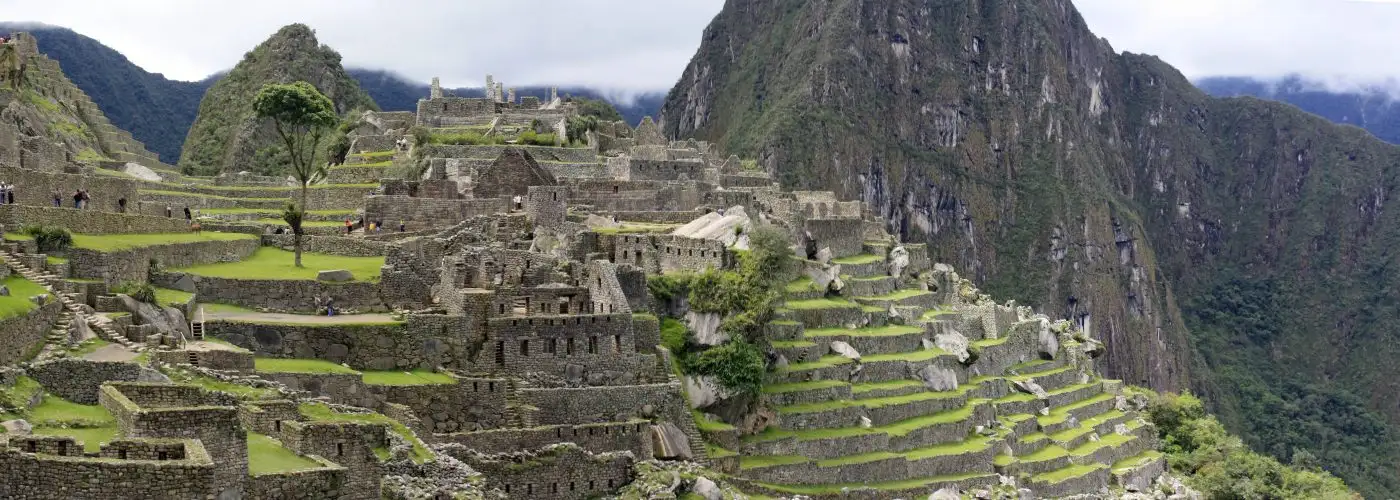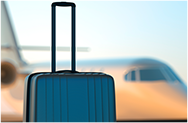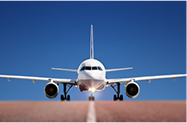Hidden away for centuries in the mountainous cloud forests of Peru, the well-preserved Incan ruins of Machu Picchu are a must for any traveler’s bucket list. Though the UNESCO World Heritage site’s origins remain mysterious—was it a royal retreat? A religious site? The famed lost city of the Incas?—Machu Picchu travel has become a booming business, with upwards of 1.1 million visitors flocking to it each year.
[viator_tour destination=”937″ tours=”32188P3,18940P3,19945P3″]
Machu Picchu Travel Tips
To make the most of your trip, you’ll want to know the best time to visit Machu Picchu in order to avoid crowds, plus the best way to get there, and which type of ticket you should buy. For help planning a trip to Machu Picchu, use these comprehensive tips.
The Best Time to Visit Machu Picchu
The busiest time of year to visit Machu Picchu is between July and October, when the weather is typically dry and pleasant. If you’re planning your Machu Picchu travel for this time period, prepare for crowds and make sure to book tickets and tours well in advance.
The rainy season runs from November through March or early April, with downpours (and muddy trails) at their peak between January and March. The Inca Trail is closed each February for maintenance.
If you’re looking to avoid the worst of the crowds without risking too much rain, visit Machu Picchu during the months of April, May, and June.
The Inca Trail and Alternative Machu Picchu Treks
The most popular way for adventurous travelers to reach Machu Picchu is the famous Inca Trail, which takes you on a four-day trek through the mountains and directly to the ruins. For those who don’t have the time and/or fitness to conquer the full trail, there’s a two-day version of the Inca Trail that’s shorter and easier. Note that access to the trail is restricted to just 500 people per day (including support staff—you can’t hike the Inca Trail without a guide), and permits sell out months in advance.
Fortunately, there are less crowded alternative hikes to choose from. Consider the strenuous five-day Salkantay trek for incredible high-altitude scenery, or the four-day Lares trek for stops in local Andean communities. If you’re really up for a challenge, consider the Choquequirao trek, which takes you to hidden Incan ruins that most visitors to Peru never get to see.
Companies such as SAS Travel and Llama Path offer organized trips for these and other Machu Picchu treks.
Machu Picchu Package Tours
It’s nearly impossible to book a group tour of Peru that doesn’t include a stop at Machu Picchu. G Adventures, Intrepid Travel, and National Geographic Expeditions are among the many companies that offer package tours of Peru.
You can also book a shorter tour of Machu Picchu as part of an independent vacation. Just about every travel agent in Cusco can book a day or overnight trip from there to Machu Picchu, or you can reserve one in advance on SmarterTravel’s sister site, Viator. If you have the time, we’d recommend an overnight stay in the Machu Picchu area; driving to and from Cusco makes for a long, grueling day trip, starting as early as 4:00 a.m.
Planning an Independent Visit to Machu Picchu
Not a fan of traveling with groups? It’s easy enough to arrange your own visit to Machu Picchu. Most travelers arrive at Machu Picchu Pueblo (also known as Aguas Calientes) via a train from Cusco, Urubamba, or Ollantaytambo. Peru Rail and Inca Rail are the two main providers; you can buy tickets on their websites or at their ticket offices around Peru.
To get to the ruins, most visitors take a 20-minute bus ride up a winding mountain road. You can buy tickets to do so from the booths next to the bus station in downtown Machu Picchu Pueblo. Alternatively, you can walk from the pueblo to the ruins, which takes about 90 minutes and is mostly uphill.
You must buy your ticket to Machu Picchu in advance, through either the official government website or a travel agency: You can’t buy Machu Picchu tickets on arrival. Note that the government website only accepts bookings with a Visa credit card (not Mastercard or American Express), and can be a bit confusing to use, especially if you don’t speak Spanish. You can use a Google Chrome browser to translate the site into English.
Machu Picchu recently made changes to its ticketing policy in an effort to manage the flow of crowds. Now you buy your ticket based on hourly entrance times, and although you can enter after the time stamped on your ticket, you won’t be able to get in before, though your ticket might have a more specific time table that you would need to adhere to. You’ll take a guided tour, which takes two to three hours, and if you exit, you won’t be able to get back in.
If you don’t use your ticket on the specified date and time, you won’t get a refund, and you won’t be able to use your ticket to enter Machu Picchu at any other day or time. The most popular entry time into the archaeological wonder is as early in the morning as possible: 6:00 a.m. If you want this time slot (or any other), book it on Machu Picchu’s official website (run by Peru’s Ministry of Culture) as soon as possible, as there are only 5,600 tickets sold each day. The site closes, and all visitors must be out, by 5:30 p.m.
Huayna Picchu and Machu Picchu Mountain
There are two optional hiking areas within the Machu Picchu ruins that require special tickets to access.
Huayna Picchu is the more popular of the two, involving a climb up the famous peak that appears in the background of most classic Machu Picchu photographs. At the trail checkpoint, you’ll see signs for both Huchuy Picchu and Wayna Picchu. Don’t be confused: Wayna is an alternate spelling of Huayna. Huchuy Picchu is the small mountain in front of Huayna Picchu.
The trip to the top of Huchuy Picchu and back takes only about 45 minutes. For more spectacular views, hike to the top of Wayna Picchu, which takes about two hours roundtrip. From this path you can also take a detour to see the Temple of the Moon, part of the Gran Caverna, or Great Cave, complex. This adds another hour or two to your total trekking time.
Hiking Machu Picchu Mountain is also an option, and is more rigorous and less crowded than the Huayna Picchu trail. Located on the opposite side of the ruins, Machu Picchu Mountain is higher than Huayna Picchu (it tops out at more than 10,000 feet, compared to Huayna Picchu’s 8,900 feet), so some travelers may be affected by the altitude. This hike takes an hour longer than Huayna Picchu, but the views are similarly spectacular.
Both the Huayna Picchu and Machu Picchu Mountain hikes are restricted to 200 visitors for each entry period: between 7:00 and 8:00 a.m., or between 10:00 and 11:00 a.m.
Machu Picchu Hotels
If you want to sleep right next to the ruins and be the first in line when they open at sunrise, you have one very expensive option: The luxe Belmond Sanctuary Lodge is located steps from the main entrance.
Most visitors stay in nearby Machu Picchu Pueblo, a small but bustling town with lodging options for every price point. One of the most indulgent is the Inkaterra Machu Picchu Pueblo, which is within walking distance of restaurants and the train station but feels like a remote resort, complete with bubbling fountains and lush landscaping. Guests stay in private casitas with colonial-style furniture, and many feature fireplaces or private plunge pools.
More moderately priced options in Machu Picchu Pueblo include the Casa Andina Standard and the Tierra Viva Machu Picchu, both of which offer comfortable rooms with river views.
Need-to-Know Machu Picchu Travel Tips
First and foremost, wear comfortable shoes: Machu Picchu is a large site with lots of hills and stairs, and there are few places to sit and rest. Walking sticks are prohibited except for “elderly and incapacitated” visitors, according to the official ticket. If you do need to use a stick or cane, make sure it has a rubber tip to protect the ruins. Visitors with wheelchairs can access the site with an operator called Wheel the World.
The weather can change quickly in the mountains, so you’ll want to pack sunscreen, a wide-brimmed hat, and rain gear. Throw in some insect repellent to fend off pesky mosquitoes.
The only toilets on site are right outside the entry gates. Bring change; there’s a small fee to use them.
Food options near the main gates are limited to a pricey buffet at the Belmond Sanctuary Lodge and a mediocre snack bar. Note that eating is technically forbidden within the ruins, though we spotted fellow hikers refueling with granola bars at the top of Wayna Picchu—just be sure to take any trash out with you.
To learn more about the history of Machu Picchu, stop at the Museo de Sitio Manuel Chavez Ballon, a small museum with information about the ruins. It’s located about a 30-minute walk from Machu Picchu Pueblo.
More from SmarterTravel:
- Machu Picchu: How to Plan a Perfect Trip to the Lost City of the Incas
- Machu Picchu Is Overrated, Go to Choquequirao Instead
- Sacred Valley, Peru: How to Plan the Perfect Trip
[viator_tour destination=”927″ type=”3-mod” tours=”14086P20,5243P120,65921P14″]
Sarah Schlichter recently spent the night in Machu Picchu Pueblo courtesy of Inkaterra Machu Picchu Pueblo. Follow her on Twitter @TravelEditor for more travel tips and inspiration.
Editor’s note: This story was originally published in 2018. It has been updated to reflect the most current information.
We hand-pick everything we recommend and select items through testing and reviews. Some products are sent to us free of charge with no incentive to offer a favorable review. We offer our unbiased opinions and do not accept compensation to review products. All items are in stock and prices are accurate at the time of publication. If you buy something through our links, we may earn a commission.
Related
Top Fares From
Today's Top Travel Deals
Brought to you by ShermansTravel
Australia: Upscale, 8-Night Cairns, the Gold...
Down Under Answers
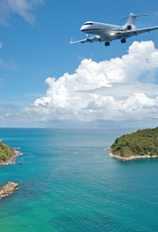 vacation
$3899+
vacation
$3899+
Ohio: Daily Car Rentals from Cincinnati
85OFF.com
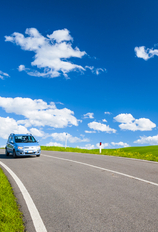 Car Rental
$19+
Car Rental
$19+
Shop and Save with Country Inns...
Patricia Magaña
 Hotel & Lodging Deals
Hotel & Lodging Deals
